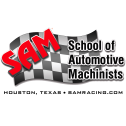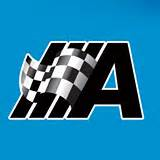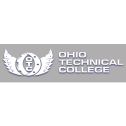What do they do?
Help installation, maintenance, and repair workers in maintenance, parts replacement, and repair of vehicles, industrial machinery, and electrical and electronic equipment. Perform duties such as furnishing tools, materials, and supplies to other workers; cleaning work area, machines, and tools; and holding materials or tools for other workers.
Also known as:
HVAC Helper (Heating, Ventilation, Air Conditioning Helper), HVAC Installation Helper (Heating, Ventilation, Air Conditioning Installation Helper), Maintenance Aide, Maintenance Helper, Mechanic Helper, Mechanic Repair Helper, Mechanic's Assistant, Technician's Helper
-
1.6%
Change
Ranks #47 in job growth rate220Job Openings
Ranks #21 in net job growth
Looking for colleges that offer a specific major? Use the College Match Tool to find your best-matched schools and discover your estimated Net Price!
- High school diploma equivalent (43%)
- Less than high school diploma (29%)
- Some college, no degree (19%)
- Bachelor's degree (6%)
- Associate's degree (3%)
- Master's degree (<1%)
- Doctorate or Professional Degree (<1%)
People in this career often know a lot about:
- Mechanical - Knowledge of machines and tools, including their designs, uses, repair, and maintenance.
- Building and Construction - Knowledge of materials, methods, and the tools involved in the construction or repair of houses, buildings, or other structures such as highways and roads.
- Customer and Personal Service - Knowledge of principles and processes for providing customer and personal services. This includes customer needs assessment, meeting quality standards for services, and evaluation of customer satisfaction.
- Public Safety and Security - Knowledge of relevant equipment, policies, procedures, and strategies to promote effective local, state, or national security operations for the protection of people, data, property, and institutions.
- English Language - Knowledge of the structure and content of the English language including the meaning and spelling of words, rules of composition, and grammar.
- Engineering and Technology - Knowledge of the practical application of engineering science and technology. This includes applying principles, techniques, procedures, and equipment to the design and production of various goods and services.
- Mathematics - Knowledge of arithmetic, algebra, geometry, calculus, statistics, and their applications.
- Design - Knowledge of design techniques, tools, and principles involved in production of precision technical plans, blueprints, drawings, and models.
People in this career often have talent in:
- Manual Dexterity - The ability to quickly move your hand, your hand together with your arm, or your two hands to grasp, manipulate, or assemble objects.
- Arm-Hand Steadiness - The ability to keep your hand and arm steady while moving your arm or while holding your arm and hand in one position.
- Control Precision - The ability to quickly and repeatedly adjust the controls of a machine or a vehicle to exact positions.
- Near Vision - The ability to see details at close range (within a few feet of the observer).
- Multilimb Coordination - The ability to coordinate two or more limbs (for example, two arms, two legs, or one leg and one arm) while sitting, standing, or lying down. It does not involve performing the activities while the whole body is in motion.
People in this career often do these activities:
- Install machine or equipment replacement parts.
- Inspect mechanical equipment to locate damage, defects, or wear.
- Test mechanical equipment to ensure proper functioning.
- Observe equipment in operation to detect potential problems.
- Connect hoses to equipment or piping.
- Connect electrical components or equipment.
- Assemble structural components.
- Clean work areas.
- Clean equipment, parts, or tools to repair or maintain them in good working order.
- Lubricate equipment to allow proper functioning.
- Inspect electrical or electronic systems for defects.
- Repair electrical components.
- Reassemble equipment after repair.
- Disassemble equipment for maintenance or repair.
- Position equipment using hand tools, power tools, or heavy equipment.
- Move materials, equipment, or supplies.
- Adjust equipment to ensure optimal performance.
- Maintain work equipment or machinery.
- Order materials, supplies, or equipment.
- Apply protective coverings to objects or surfaces near work areas.
- Fabricate parts or components.
- Operate welding equipment.
This page includes data from:

 Occupation statistics: USDOL U.S. Bureau of Labor Statistics Occupational Employment Statistics
Occupation statistics: USDOL U.S. Bureau of Labor Statistics Occupational Employment Statistics
 Videos: CareerOneStop, USDOL/ETA and the Minnesota Department of Employment & Economic Development
Videos: CareerOneStop, USDOL/ETA and the Minnesota Department of Employment & Economic Development












